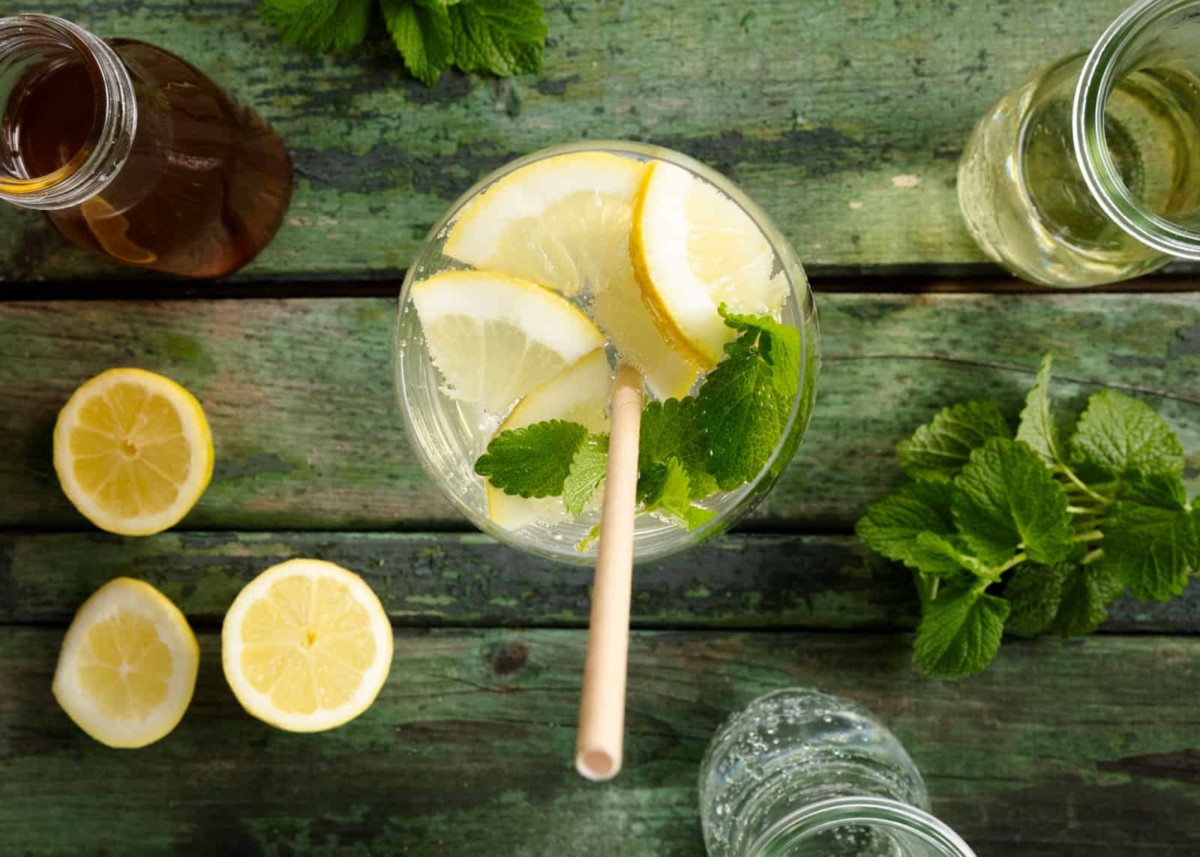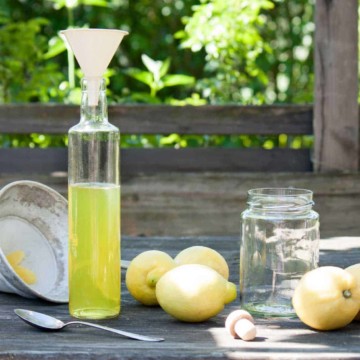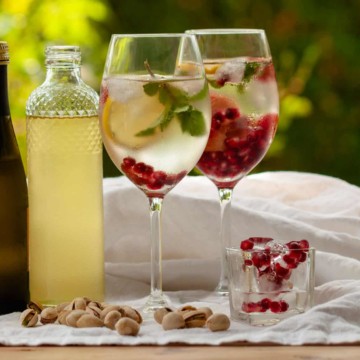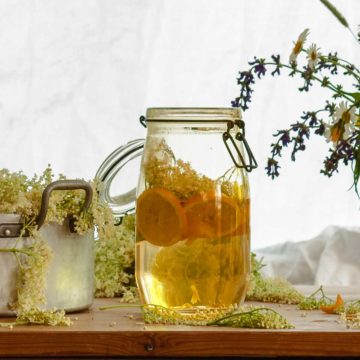
For me personally, lemon balm syrup is simply part of summer. The refreshing syrup is great in mineral water, in Frizzante as well as in cocktails or over ice cream and fruit salad. Depending on the variety of lemon balm, the lemony aroma varies in intensity.
From spring until autumn
The active ingredients as well as the finely fragrant essential oils of lemon balm, also known as melissa or crimson bee balm, are found in the leaves. The first leaves can be gathered directly after budding in spring. Then the aroma becomes more intense until the beginning of autumn. Wild melissa – and also that in gardens– is a favoured food source for many species of bees and other insects between June and July. So it is best to give the plant a rest when it is in bloom.

Of botanists and nymphs
The name of the plant, appropriately enough, originates from the Greek word for honeybee: melissa. In ancient mythology, this was the name for several nymphs, including the first beekeeper. Joseph Pitton de Tournefort (1656-1708) was probably the first botanist to describe the plant. In Calabria today there is still a small village called Melissa. It is a “place of bees and honey", which was already mentioned by Ovid. A sorceress is said to have given her name to the village. Or was it the bees after all?
From salads to Hugo
I pick the lemon balm leaves before flowering on a sunny day. I prefer after a dry spell of weather and away from traffic or sprayed fields. The delicate leaves taste wonderful in salads or fruit salads, they add flavour to cold water or a fragrant tea. And there is, of course, the South Tyrolean bartender Roland Gruber. Since 2005 he has made melissa syrup truly famous – as an indispensable ingredient for a “Hugo”.
📖 Recipe

Lemon balm syrup
Equipment
- 1 container ca 2 Liter capacity
- 1 funnel
- 2 Bottles ca 2 Liter capacity
Ingredients
- 200 g lemon balm leaves, melissa, crimson bee balm
- 1 l water
- 1 kg sugar
- 20 g citric acid
- 2 lemons, untreated - juice and peel
Instructions
- Wash the lemon balm and pat dry. Separate the leaves from the stems. Bring the water to boil in a saucepan. Add the sugar, citric acid and the yellow lemon peel, thinly peeled with a sharp knife (be careful, the white skin underneath is bitter). Boil for a few minutes and then leave to cool.
- Pour the lemon juice into the sugar water. Add the lemon balm leaves. Cover with cling film and allow to rest for five days in a cool, dark place (in the cellar). Stir occasionally.
- Strain syrup through a fine cloth into a clean pot, then pour into sterilised bottles. Cover the bottles with a screw cap only, but do not screw them shut. The syrup may occasionally ferment and the bottles could crack. Store the bottles in a fresh and cool place. lemon balm syrup keeps well for six months.
- Mix the syrup with soda water (ratio 1:6) and a few slices of lemon or the juice of a fresh lemon. For a Hugo, replace most of the water with Prosecco and add a few fresh mint or lemon balm leaves.
Notes
Nutrition
Buon rinfresco!





Leave a Reply